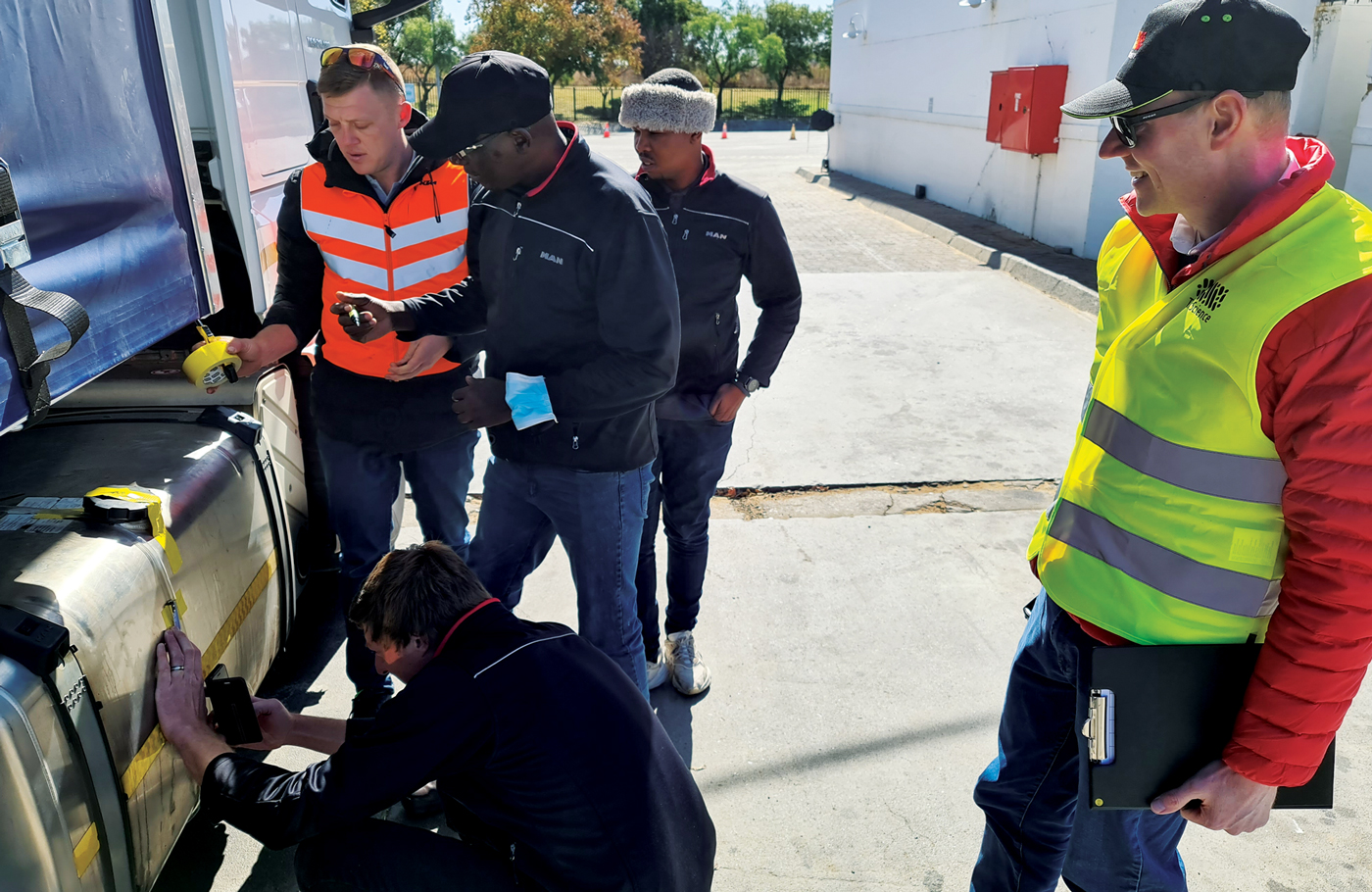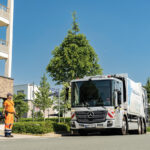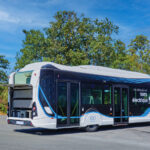The best truck for the job: specified!
The best truck for the job: specified!
Selecting the best truck for a specific job might seem like a mammoth task. Not only are there an array of original equipment manufacturers (OEMs) to choose from, but also a large selection of configurations within an OEM’s stall. But you don’t have to arrange a truck test for every vehicle in the running… TruckScience is here to help.
In short, TruckScience develops software to simplify the process of selecting the best truck for a particular job. “Our software is used to calculate axle weights, estimate fuel consumption, and predict the Total Cost of Ownership (TCO). And our customers benefit by speccing safe, legal, and efficient trucks,” explains Martin Dammann, customer success manager at TruckScience.
37 years and counting
“Our software was a desktop application, years ago, and we used to survey the routes that we use for our simulations ourselves,” he continues.
After starting to migrate its desktop application to an online version around 2010, TruckScience has been providing a fully online version of its entire suite since about 2014. “We replaced our manually surveyed routes with electronic maps around the year 2000, when electronic maps came into use for navigation units in people’s vehicles,” notes Dammann.
The migration to an online application has enabled TruckScience to keep everything up to date, without users having to download anything. “With the software being online, it also comes with an advantage that we can add new features very easily; it is always the latest version in terms of software features and the data,” Dammann explains.


Not just about big data
Transport operators are faced with an overload of data and stand-alone vehicle specifications, but TruckScience isn’t in the business of only providing data. “Transport operators are always bombarded with loads of data, but they get very little information that helps them to get the best-suited vehicle for their specific application, or information on how much a unit will cost over its lifespan,” says Dammann.
TruckScience helps operators by bringing specifications and data to life. “We translate the specs and the raw data into meaningful information on which truck operators, together with truck salespeople and body builders, can then base a vehicle purchasing decision. So, it’s really all about turning data into information,” he expands.
One of a kind
TruckScience is the only product in South Africa that offers this combination of weight distribution calculation, performance simulation, TCO forecast, and vehicle specification comparison – all in one suite.
“We have a few competitors in the US and Europe, and our customers are also our competitors, in a sense,” Dammann explains. “The OEMs’ parent companies sometimes develop their own software that is similar to what we offer. But, in South Africa, most manufacturers have chosen our software over the software that they can get from their parent company for free, because our software is customised to the South African regulations, conditions, and even other products like trailers and bodies. It is really a unique product.”
The proof of the pudding is in the eating
TruckScience’s Sales Tool software was used to calculate fuel consumption, trip times, and productivity before Truck Test 2022 kicked off. These theoretical results were then compared with the real-world conclusions (catch the report from Truck Test in this issue, starting on page 20).
“Truck Test is an independent test designed to provide direct comparisons between different vehicles and driving techniques – not only from different brands, but different vehicles within the same brand as well,” Dammann points out. “This test makes it easier to draw direct comparisons, because the trailers, load, weather, traffic, and routes are already the same for everyone – so you are just comparing the vehicle at the front end of this.”

Truck Test is an opportunity for TruckScience to put its scientific calculations to the test in a real-world scenario. “We simulate the axle weights, fuel consumption, and trip times in advance, then compare our results to the actual results after the test,” he adds. “This comparison allows us to improve our data and algorithms to run accurate simulations for any vehicle on any application.”
But the process of selecting the right truck for a job is complicated by the fact that a vehicle’s performance varies considerably at different loads and on different routes. “It is not feasible to run something like the Truck Test, or a vehicle demo, for every one of the scenarios that exist. Operators need to evaluate a combination on different routes, different topographies, different traffic conditions, and different speed limits – to do that as a demo or through the Truck Test for every possible route is simply too expensive. So, one has to rely on software to really reduce the cost of calculating all of the possibilities in terms of what is actually the best truck for the job,” says Dammann.
He goes on to highlight the customer feedback that TruckScience receives, saying that on average, its simulated results are accurate to within 5% of actual results: “This gives them the confidence to use our software to predict the TCO on new contracts, or to set benchmarks for existing routes.”
Not just a pre-purchasing tool
“Transport operators can use our software to evaluate the performance and the TCO of different brands of vehicles – as well as different models from the same manufacturer – for an application before they purchase them,” Dammann emphasises.
“A manufacturer might have four or five models that look like they are suitable for the application, but with our software you can compare the different power levels, drive-axle ratios, or wheelbases of trucks as well. It can also be used to create benchmarks for an existing fleet.”
Body builders and trailer manufacturers can also benefit from TruckScience’s offering. “They mainly use the software to determine the maximum legal payload that a vehicle or combination can carry, and to ensure that all of the dimensions are within the legal limits,” he continues. “They can also import their bodies and trailers into our software, then add them to any vehicle in the South African market to do a more accurate calculation and provide a professional graphic that includes their product.”
The software also allows users to manage data access, so it is as safe as can be. “We’ve been allowing our customers to add or upload their own products since 2019, and recently we have started offering users the ability to choose which of their partners or distributors have access to their data. This is important to them because some product drawings are confidential and users don’t want those to be available in the public domain, but a lot of them work with partners and distributors with whom they have to share their data,” Dammann points out.
Taking customers into consideration – in more ways than one
TruckScience also offers a live chat feature, which allows users to get in touch with the software developer more easily if they have any questions or suggestions: “This has been running for about five years. It is a really great way for new and existing users to get in touch with us. They also give us valuable feedback on features that they need, and we can switch from a live chat to a screen share session instantly, to assist users with calculations and answer any questions they might have. It is a fantastic way to provide support to our customers,” Dammann says.
“We document all of the feature requests that we get from the chat feature and if there are features requested frequently that add value for our other users, then we prioritise those as the features that we add next,” he continues. “This enables us to meet customer requirements rather than working in a vacuum where we decide what to add.”
Growing globally
The TruckScience team is spread all over the world, with its head office in Ireland. “We have contractors and partners in South Africa, Australia, New Zealand, the US, Canada, central Europe, and central America, which puts us in all the time zones,” says Dammann.
“Our product initially started off in South Africa, but we were easily able to adapt the software to other markets. It was simply a case of adding the regulations, data, and local terminology, so we can offer our software to anyone, anywhere in the world, even in our non-core markets.”
Dammann adds that people aren’t afraid to use software to simulate solutions anymore, whereas in the past, they would always rely on knowledge and experience to design or spec a vehicle on a piece of paper. “People are now far more accustomed to using the simulations and software that we develop to actually assist in that process – to take a more scientific approach overall.”
Published by
Focus on Transport
focusmagsa






